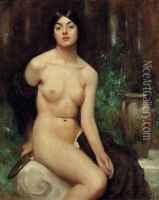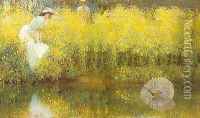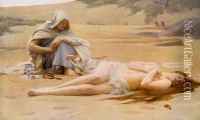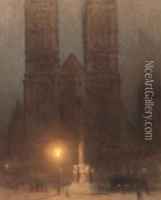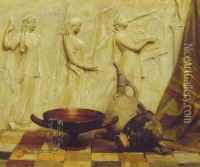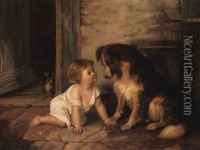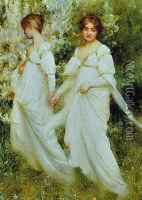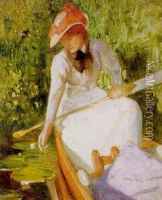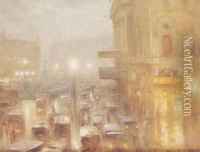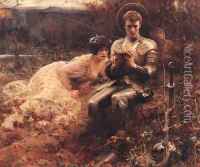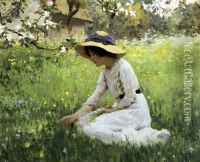Arthur Hacker Paintings
Arthur Hacker was a British painter born on September 25, 1858, in London, England. He was the son of Edward Hacker, a line engraver specializing in animal and sporting prints. Hacker was educated at the Royal Academy Schools where he won a gold medal in 1880 and a traveling scholarship to study in Paris. While in Paris, he trained at the studio of Léon Bonnat, a prominent French portrait painter, and was influenced by the French realist and academic traditions.
During his early career, Hacker primarily painted genre scenes and portraits. His painting 'The Annunciation', exhibited at the Royal Academy in 1892, was his most notable early work and depicted religious scenes with a modern sensibility, which was somewhat controversial at the time. Hacker's style evolved throughout his career, and he became known for his dramatic and often sentimental paintings, which could range from contemporary narratives to historical and mythological subjects.
Around the turn of the century, Hacker's work became more widely recognized. He was elected as a member of the Royal Academy of Arts in 1910, which was a significant honor and marked the peak of his career. His later works often featured landscape and seascape paintings, and he continued to exhibit regularly at the Royal Academy until his death.
Arthur Hacker passed away on November 12, 1919. Although his popularity waned after his death, his work is still appreciated for its technical skill and the emotional depth of his narrative pieces. His paintings can be found in various art galleries and collections throughout the UK, including the Tate Gallery in London and the Manchester Art Gallery.
